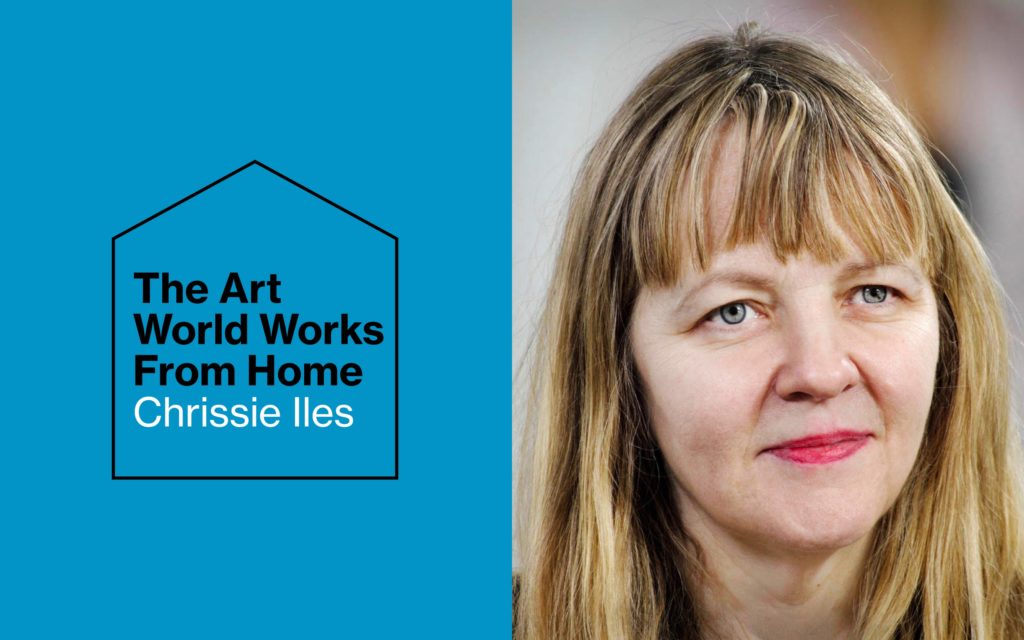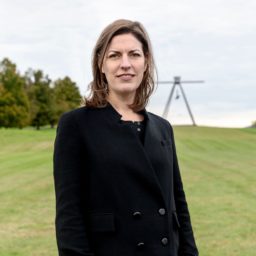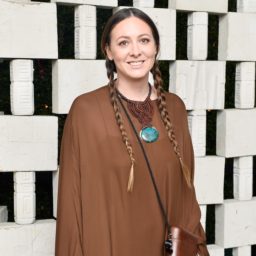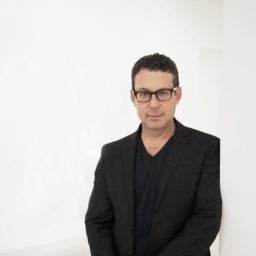The art world may be on lockdown, but it certainly does not stop. During this unprecedented time, we’re checking in with art-world professionals, collectors, and artists to get a glimpse into how they are working from home.
We recently caught up with Chrissie Iles, the Anne and Joel Ehrenkranz curator at the Whitney Museum of American Art. Recognized as an authority on both contemporary moving-image work and the (somewhat) more traditional art of the 1960s and ’70s, Iles has long understood the importance of versatility and variety. So it’s no surprise that, even during the shutdown, she’s managing to balance everything from deep scholarly research and remote visits with artists, to kundalini yoga and Moroccan cooking.
Read on to learn how the shutdown is influencing the next exhibition on her agenda, and which edgy thriller she’s using to offset her array of Zoom meetings and YouTube conference viewings.
Where is your new “office”?
It’s an extension of the quiet space I create at home when I’m writing: a desk, computer, books, lamp, a plant, music on headphones, papers, and notes.
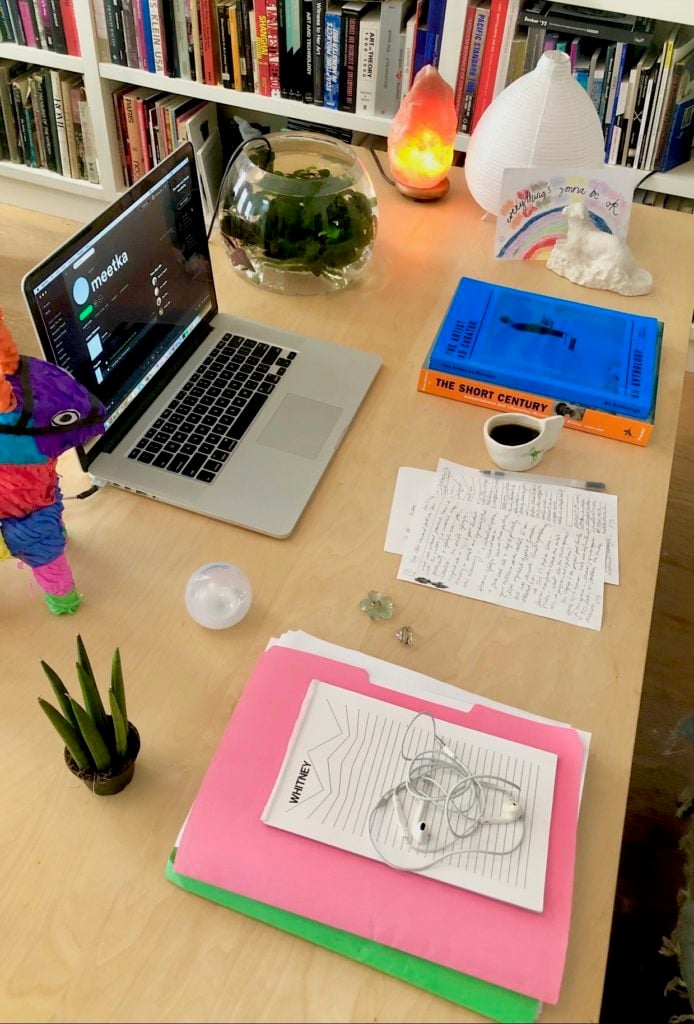
Chrissie Iles’s home office. Courtesy of Chrissie Iles.
What are you working on right now (and were any projects of yours interrupted by the lockdown)?
I’m curating a solo show of Madeline Hollander’s work, featuring her first video installation, Flatwing, which we acquired last year. During this hiatus, senior curatorial assistant Clémence White and I have been having remote studio visits with Madeline with long discussions of her work, including the issues around climate change that it addresses, which the current crisis has thrown into sharp focus.
Cauleen Smith’s exhibition “Mutualities” had just opened, alongside “Vida Americana,” when the lockdown happened. We were so excited, and Cauleen was discovering many resonances between the two shows. We were about to screen her film Chronicles of a Lying Spirit (by Kelly Gabron) as well as Passing Through, by LA Rebellion filmmaker Larry Clark, then follow with a discussion between her and film scholar Michael Gillespie. And we were collaborating with the High Line, which was due to show four of Cauleen’s films each evening from March until May. So we all felt like we were interrupted in mid-flow.
How has your work changed now that you are doing it from home?
The biggest change is not being in the museum, and not being able to visit artists’ studios and see shows. These are mainstays of my work and life, and they are all interconnected. My work at home is focused on initiatives to show art to audiences while we’re closed, as well as upcoming shows, taking care of newly acquired works and the moving-image part of our collection, research, and planning. Like everyone, our meetings have transferred from in-person to remote, and I’m always happy to see everyone’s faces online. I miss all my colleagues!
Last week I attended a Zoom discussion between Tony Cokes and Christoph Cox, organized by the Carpenter Center at Harvard. It was surreal to see some of the audience live and others as black squares because they’d chosen not to switch on their cameras, like a hybrid of live TV and radio.
What are you reading, both online and off?
Online, I’m reading Daniel Defoe’s Journal of the Plague Year and articles about the Antonine Plague during the Roman period, searching for a historical context for the current situation. In book form, I’m reading Slow Down Fast, A Toda Raja, a conversation between Camila Marambio and the Chilean artist Cecilia Vicuña, whose arguments feel particularly urgent. I’m also reading Anna of all the Russias, a biography of the poet Anna Akhmatova. I pick up books according to my mood each quarantine day.
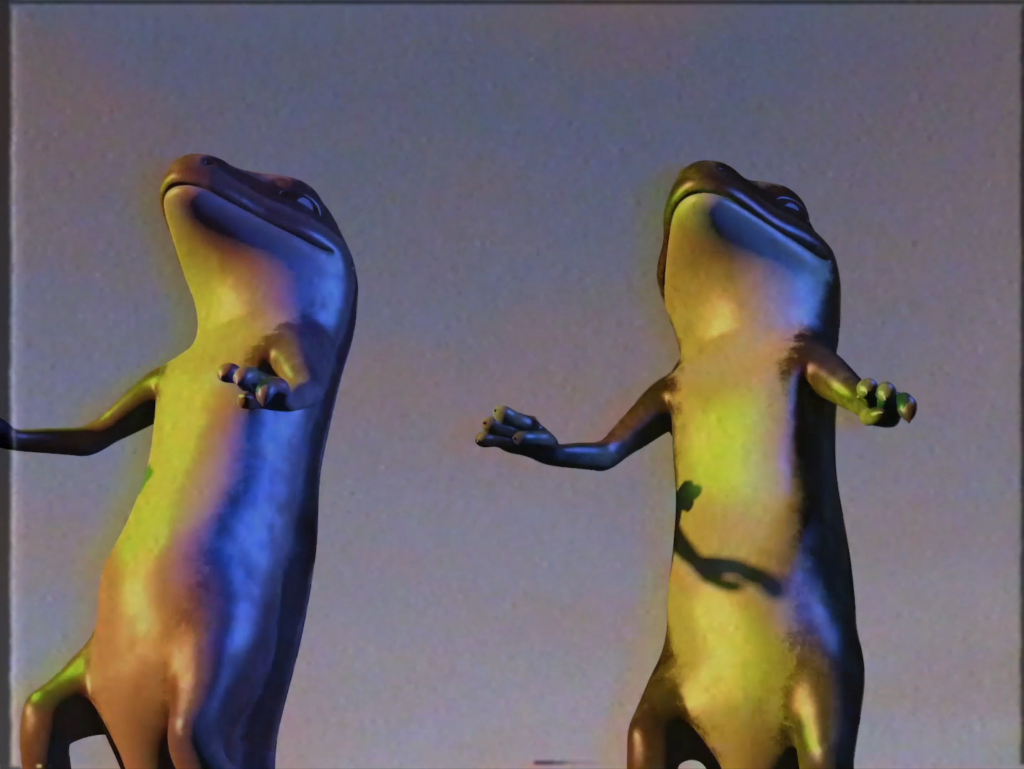
Orian Barki and Meriem Bennani, still from 2 Lizards Episode 1 (2020). Courtesy of the artist.
Have you visited any good virtual exhibitions recently?
Meriem Bennani’s 2 Lizards episodes on Instagram. I love their dark humor, and the way they express what we’re all feeling in the moment. Also, Elizabeth Jaeger and ICU nurse Cady Chaplin’s project of inviting artists to make posters of support for the nurses in ICU units in hospitals. Each new drawing is rolled out by Elizabeth and other artists online as it is made, making it an ongoing virtual show. It’s such a generative and thoughtful action, and Meriem seamlessly wove it into her latest 2 Lizards episode.
In LA, Cauleen Smith has uploaded eight of her films on her instagram feed for her ongoing “shut-in film festival.” And Celia Hollander organized a drive-in remote live radio broadcast performance from a parking lot in Echo Park. I’m watching a lot of the online projects and screenings that artists, spaces, galleries and film centers are streaming. The number of films currently available online is cinephile heaven! BAM is streaming films curated by Ashley Clark, Gina Duncan, Jesse Trussell, and Natalie Erazo, for example. There’s a lot of sharing, talking, and imaginative connecting. So many great projects are being initiated by artists; the community remains strong under pressure, but it needs support.
Have you taken up any new hobbies?
I’m using this time to practice being a Minimalist, but the siren call of online shopping persists.
What is the first place you want to travel once this is over?
I want to cycle to the museum and see everyone again, and see all my friends. And then fly to England and Italy, to see my family and friends there. We will never stop traveling, but I wonder if we will ever travel in such a carefree way again.
If you are feeling stuck while self-isolating, what’s your best method for getting un-stuck?
It depends. Sometimes it’s spatial—going up to the roof resets everything. Sometimes it’s internal, and talking with my partner, friends, or family re-establishes perspective. Sometimes it’s physical; live kundalini yoga and meditation classes are great for re-balancing. Connecting with friends and communities online is key, and so are virtual studio visits with artists.
What was the last TV show, movie, or YouTube video you watched?
I just started the new season of Killing Eve, a crazy, dark British spy thriller that puts two powerful women in charge of the narrative. The last YouTube video I watched was the symposium “The Black Outdoors: Fred Moten and Saidiya Hartman” at Duke University, a game-changer for art history.
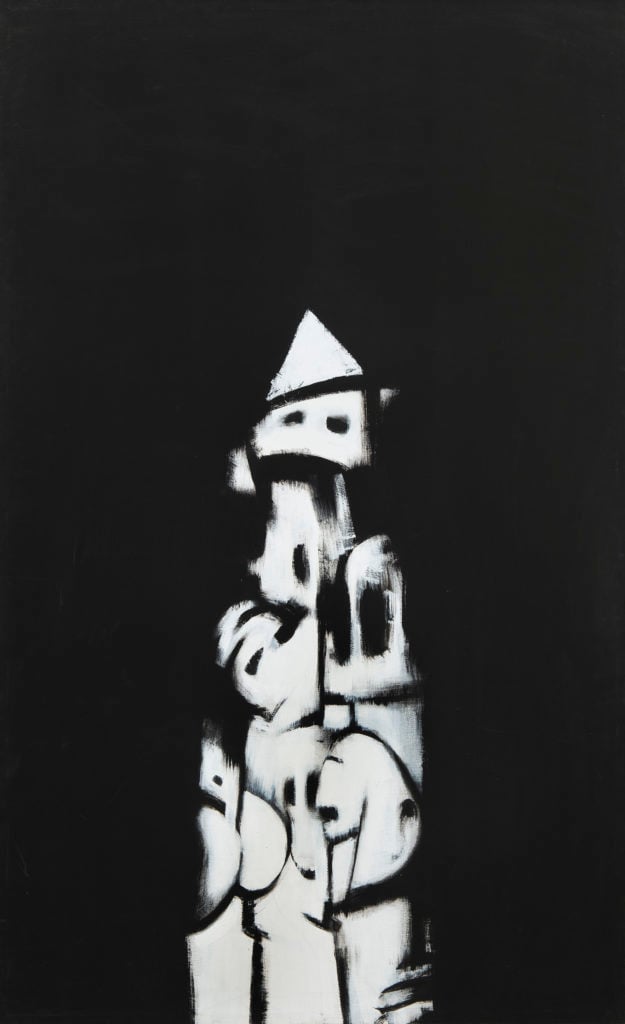
Norman Lewis, American Totem, 1960, in the collection of the Whitney Museum of American Art. © Norman Lewis. Courtesy Michael Rosenfeld Gallery LLC, New York.
If you could have one famous work of art with you, what would it be?
Norman Lewis’s American Totem (1960), from the Whitney’s collection. I look at it every day at the museum, and it’s dignified, haunting figure is a sobering reminder of how much work there is to be done. It’s one of the most important paintings of the 20th century.
Favorite recipe to cook at home?
Instagram has become a hive-mind quarantine cookery class. I’m learning how to make chicken tagine from a recipe that the artist Dora Budor shared, originally by Felicity Cloake in The Guardian. Many of the ingredients are staples of our kitchen: lemons, garlic, coriander, herbs, spices, and olives.
Chicken tagine
(Serves 4-6 people)
3 tbsp olive oil
2 red onions, thinly sliced lengthways
3 garlic cloves
2 tsp ground ginger
½ tsp saffron, in a little warm water
1 tsp cinnamon
Juice of ½ lemon
2 small preserved lemons
2 tbsp chopped parsley
1 small bunch of fresh coriander
6 chicken thighs
3 tbsp violet olives
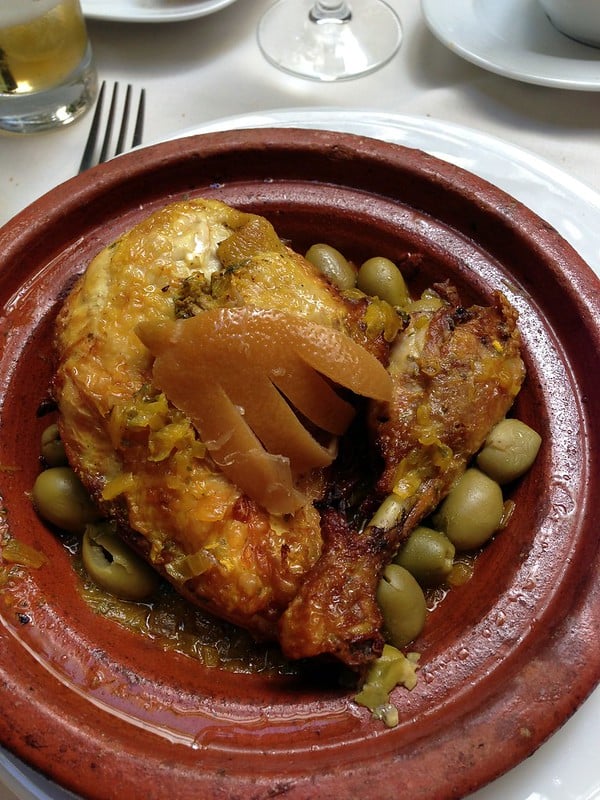
Voilà! Chicken tagine. Photography by David Berkowitz, courtesy of Flickr.
Heat a tagine or heavy-bottomed shallow lidded pan on a low heat and add the oil, followed by a layer of onion. Mash the garlic with ½ tsp salt and add to the pan. Sprinkle over the ginger, saffron water, and cinnamon, followed by the lemon juice, and coarsely chopped pulp of one preserved lemon and the rind of both, cut into slivers. Add the parsley and 2 tbsp chopped coriander and toss it all together well.
Arrange the chicken on top and scatter over the olives. Pour 175ml water into the pan, cover tightly, and simmer very gently for about 45 minutes until the chicken is cooked through.
Season to taste and top with the remaining coriander, chopped. Serve with couscous.
What are you most looking forward to doing once social distancing has been lifted?
Seeing my friends, family, and colleagues again, and hugging them. For those of us lucky enough to be healthy, able to work from home, and not in acute financial distress, this slowing-down of time is an opportunity to reflect on our responsibility to each other, and to artists. The world needs the culture that they are creating now more than ever, and I can’t wait to see it— and them—again in person.
